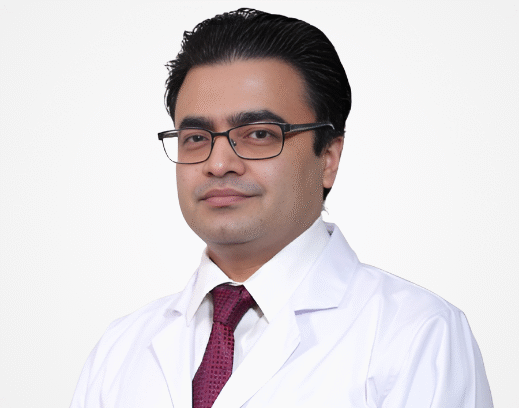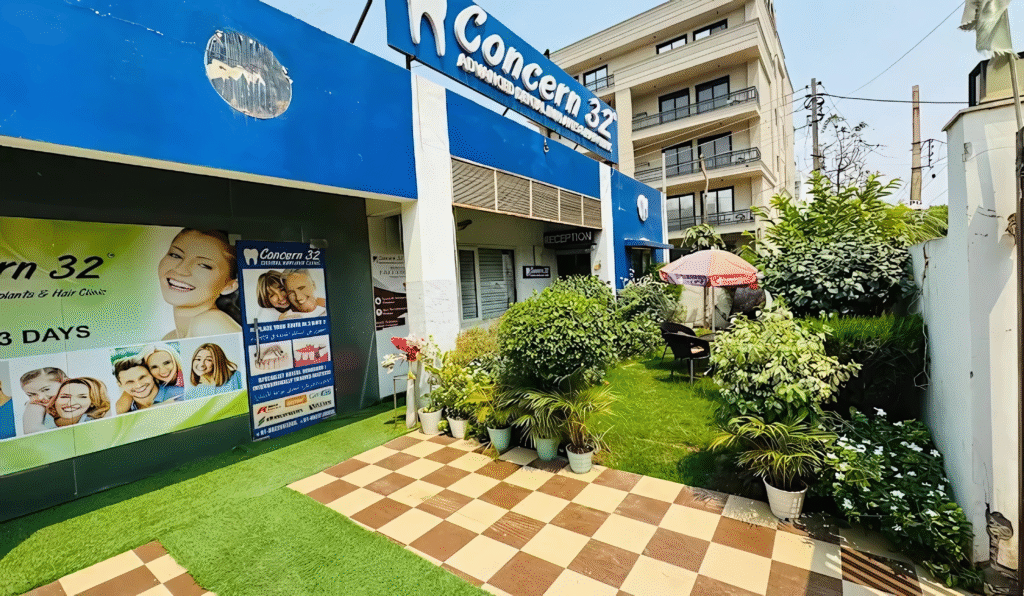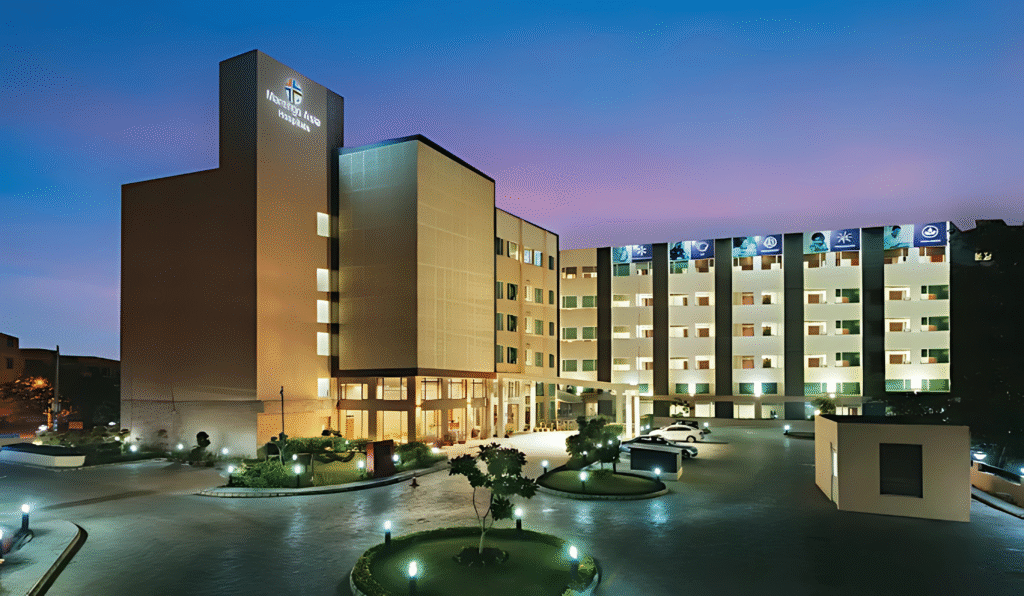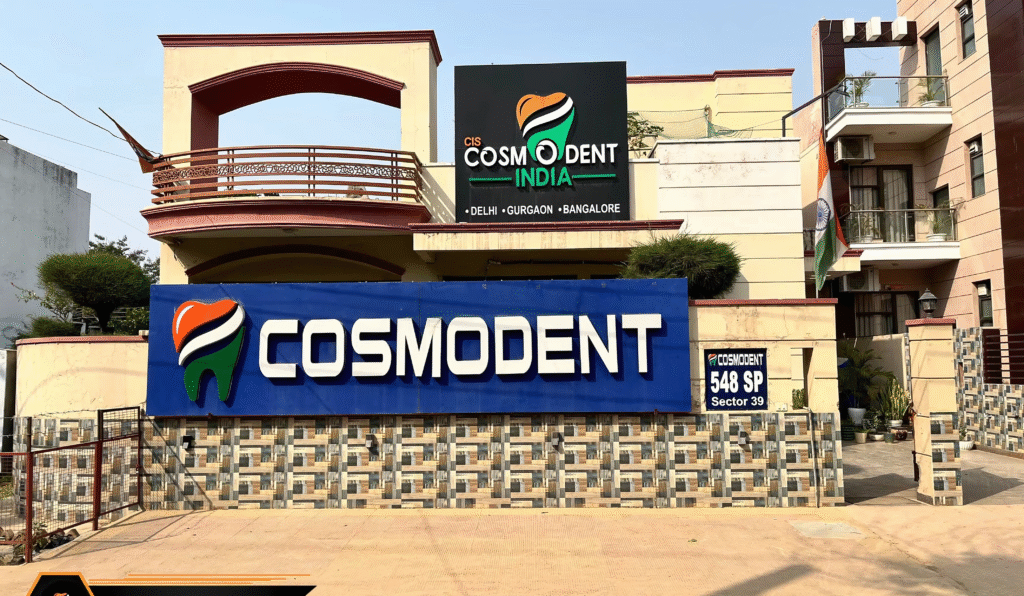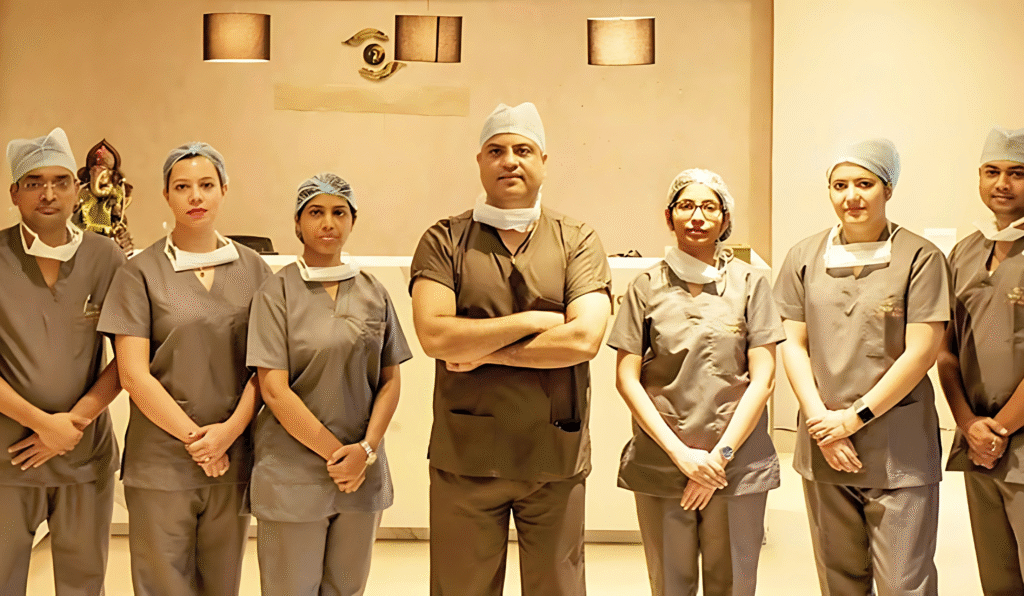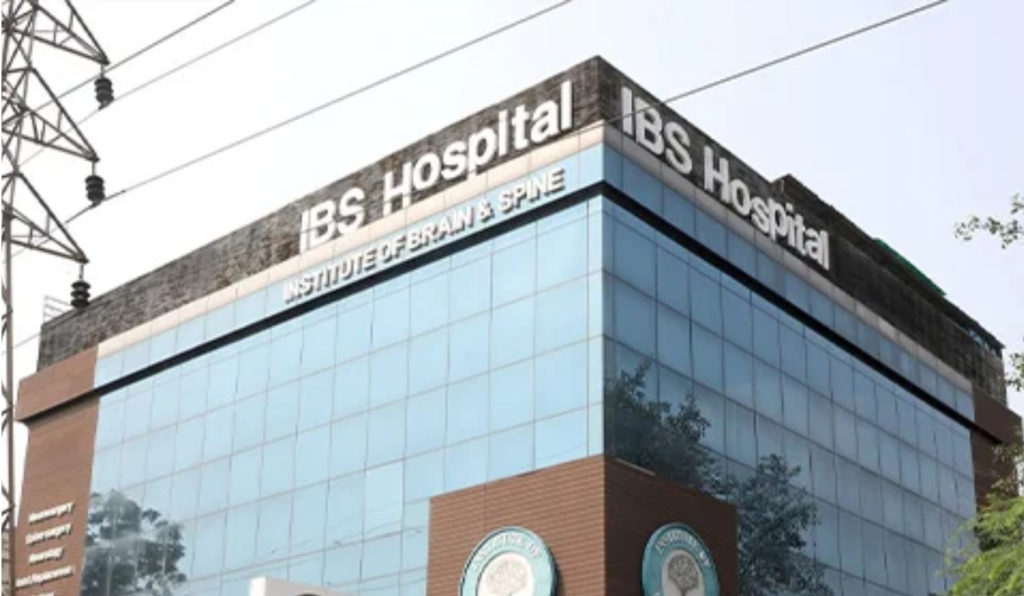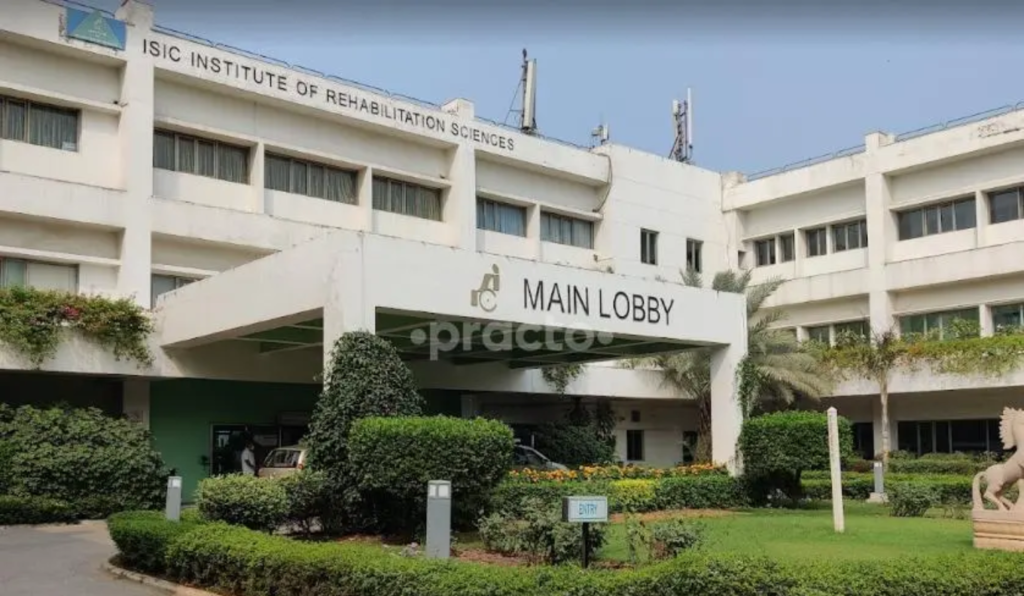Prostate Cancer Treatment Cost in India

What is Prostate Cancer?
Prostate cancer is a type of cancer that develops in the prostate gland, a small, walnut-sized organ located below the bladder and in front of the rectum in men. The prostate plays a crucial role in the male reproductive system, as it produces seminal fluid, which nourishes and transports sperm.
Prostate cancer occurs when the cells in the prostate begin to grow uncontrollably. Most prostate cancers grow slowly and may not cause serious harm in the early stages. However, some types can be aggressive, spreading quickly to other parts of the body, including the bones and lymph nodes. Early detection through routine screenings can significantly improve the chances of successful treatment.
How Does Prostate Cancer Develop?
Prostate cancer typically starts in the glandular cells of the prostate (a condition known as adenocarcinoma). In the initial stages, the abnormal cell growth is confined to the prostate, where it may remain localized for years without causing symptoms. However, in some cases, the cancerous cells can spread beyond the prostate, invading nearby tissues or metastasizing to distant organs, leading to advanced prostate cancer.
Doctors often categorize prostate cancer into different stages to determine the extent of its progression:
Localized Prostate Cancer – Cancer is confined to the prostate and has not spread.
Locally Advanced Prostate Cancer – Cancer has started to spread to nearby tissues, such as the seminal vesicles.
Metastatic Prostate Cancer – Cancer has spread to distant organs, such as the bones, liver, or lungs.
Causes and Risk Factors:
Age: Risk increases with age, particularly after 50.
Family History: Having a close relative with prostate cancer raises the risk.
Genetic Mutations: Inherited mutations, such as BRCA1 and BRCA2, can contribute.
Diet and Lifestyle: High-fat diets and obesity may increase risk.
Hormonal Factors: High levels of testosterone can influence cancer growth.
Symptoms:
In its early stages, prostate cancer may not show symptoms. However, as it progresses, men may experience:
Difficulty urinating or weak urine flow
Frequent urination, especially at night
Blood in urine or semen
Pain in the lower back, hips, or pelvis
Erectile dysfunction
Early detection through routine screening, such as PSA (Prostate-Specific Antigen) tests and digital rectal exams (DRE), can improve treatment outcomes.
Types of Prostate Cancer
Prostate cancer can be classified into different types based on how the cancer cells develop and behave. The most common type is adenocarcinoma, but there are also rare and aggressive forms of prostate cancer. Understanding these types helps doctors determine the best treatment approach.
Adenocarcinoma accounts for over 95% of prostate cancer cases. It originates in the glandular cells of the prostate that produce prostate fluid, an essential component of semen. This type is further divided into:
Acinar Adenocarcinoma: The most common form, usually slow-growing.
Ductal Adenocarcinoma: More aggressive and grows in the ducts of the prostate gland.
Small cell carcinoma is an uncommon but highly aggressive type of prostate cancer. It consists of small, round cancer cells that multiply quickly and often spread beyond the prostate before being detected. This type is more resistant to standard treatments like hormone therapy.
Squamous cell carcinoma is a rare form of prostate cancer that originates in the flat cells covering the prostate. Unlike adenocarcinomas, this type does not produce PSA (Prostate-Specific Antigen), making early detection difficult. It is usually more aggressive and spreads faster than typical prostate cancer.
This type of prostate cancer starts in the cells lining the urethra or bladder and then spreads to the prostate. It is more common in people who have a history of bladder cancer and often requires different treatment approaches.
Sarcomas are extremely rare prostate cancers that originate in the soft tissues of the prostate rather than glandular cells. These include:
Leiomyosarcoma (affecting smooth muscle tissue)
Rhabdomyosarcoma (affecting skeletal muscle tissue)
Which Type of Prostate Cancer is the Most Dangerous?
Among these types, small cell carcinoma and squamous cell carcinoma are the most aggressive and difficult to treat. They often spread quickly and do not respond well to standard hormone therapies.
Why Choose India for Treatment of Prostate Cancer
India has become a top destination for prostate cancer treatment due to its world-class medical facilities, highly qualified doctors, cutting-edge technology, and affordable costs. Every year, thousands of international patients travel to India to receive high-quality cancer treatment at a fraction of the cost compared to Western countries.
Here are some key reasons why India is an excellent choice for prostate cancer treatment:
India is home to some of the most renowned hospitals specializing in cancer treatment. These hospitals are equipped with state-of-the-art diagnostic tools, robotic surgery systems, and the latest radiation therapy machines to ensure precision and effective treatment. Some of the top hospitals include:
These hospitals follow international medical protocols and are accredited by organizations such as NABH (National Accreditation Board for Hospitals) and JCI (Joint Commission International).
India has some of the best oncologists, urologists, and radiation therapists with extensive experience in treating prostate cancer. Many Indian doctors have trained in the USA, UK, and Europe, bringing global expertise and innovative treatment techniques to India. Some of the leading prostate cancer specialists in India offer treatments that are on par with, or even better than, those available in developed countries.
One of the biggest advantages of choosing India for prostate cancer treatment is the affordable cost. In countries like the USA and UK, prostate cancer treatments can be extremely expensive, but in India, they are available at a fraction of the cost while maintaining the same high standards of care.
Indian hospitals offer the latest treatments for prostate cancer, including:
Robotic-Assisted Surgery for precise tumor removal
High-Intensity Focused Ultrasound (HIFU) for non-invasive treatment
Proton Therapy for targeted radiation with minimal side effects
Advanced Hormone & Immunotherapy Treatments
Many hospitals in India are also pioneering research in prostate cancer, offering patients personalized treatment plans based on genetic profiling and advanced molecular testing.
Unlike Western countries, where patients often experience long waiting times for surgery or radiation therapy, India provides quick access to treatment.
Appointments with top specialists can be arranged within days.
Surgery or radiation therapy can be scheduled within a week of diagnosis.
This ensures that international patients receive timely medical attention, which is crucial for cancer treatment.
India is a global leader in medical tourism, offering:
✔ Dedicated international patient coordinators
✔ Medical visa assistance for easy travel
✔ Affordable accommodation & travel support
✔ Multilingual staff, including English-speaking doctors
This ensures a smooth and hassle-free experience for foreign patients traveling to India for treatment.
Different types of Prostate Cancer Treatment in India
Prostate cancer treatment depends on factors like cancer stage, patient age, overall health, and the aggressiveness of the tumor. There are multiple treatment options available, ranging from active surveillance for slow-growing tumors to aggressive therapies for advanced cases.
Here’s a detailed breakdown of the different treatments used for prostate cancer:
Hormone therapy lowers or blocks testosterone, which fuels prostate cancer growth. It’s often used for advanced prostate cancer or combined with other treatments.
Types of Hormone Therapy:
LHRH Agonists & Antagonists: These drugs lower testosterone levels (e.g., Leuprolide, Degarelix).
Anti-Androgens: Block testosterone from reaching cancer cells (e.g., Bicalutamide, Enzalutamide).
Orchiectomy: Surgical removal of testicles to stop testosterone production.
When It’s Used:
✔ Advanced or metastatic prostate cancer
✔ Before or after radiation therapy to shrink tumors
Uses drugs to kill rapidly growing cancer cells. It is usually recommended for advanced or hormone-resistant prostate cancer.
Common Chemotherapy Drugs:
Docetaxel (first-line chemotherapy)
Cabazitaxel (used when cancer stops responding to other treatments)
When It’s Used:
✔ When cancer has spread beyond the prostate
✔ When hormone therapy is no longer effective
Targets specific genetic mutations in cancer cells while sparing healthy cells.
Examples:
PARP Inhibitors (Olaparib, Rucaparib) – Used for patients with BRCA1/BRCA2 mutations.
PSMA-Targeted Therapy (Lutetium-177-PSMA) – A new therapy targeting PSMA-positive prostate cancer cells.
When It’s Used:
✔ In patients with specific genetic mutations
✔ When other treatments stop working
Uses high-energy rays to destroy cancer cells. It is an effective treatment for both localized and advanced prostate cancer.
Types of Radiation Therapy:
External Beam Radiation Therapy (EBRT) – Targets the prostate from outside the body.
Brachytherapy (Internal Radiation) – Places radioactive seeds directly into the prostate.
Proton Therapy – A newer technique that delivers precise radiation with minimal side effects.
When It’s Used:
✔ Early-stage prostate cancer
✔ After surgery to kill remaining cancer cells
✔ When cancer has spread to nearby tissues
How It Works:
Boosts the body’s immune system to fight cancer. It is mainly used for advanced prostate cancer that does not respond to other treatments.
Common Immunotherapies:
Sipuleucel-T (Provenge) – A personalized vaccine that stimulates immune cells to attack cancer.
Checkpoint Inhibitors (e.g., Pembrolizumab) – Helps the immune system recognize and destroy cancer cells.
When It’s Used:
✔ Advanced prostate cancer
✔ When other treatments have failed
Uses extreme cold to freeze and destroy cancer cells in the prostate. A minimally invasive option for localized prostate cancer.
When It’s Used:
✔ Early-stage prostate cancer
✔ Recurrent prostate cancer after radiation therapy
For slow-growing prostate cancer, doctors may recommend monitoring instead of immediate treatment.
Active Surveillance:
Regular PSA tests, biopsies, and MRI scans to track cancer growth.
Treatment begins only if the cancer progresses.
Watchful Waiting:
No regular tests; treatment begins only if symptoms develop.
Suitable for elderly patients or those with other serious health issues.
When It’s Used:
✔ Low-risk, slow-growing prostate cancer
✔ Older patients who may not need aggressive treatment
Uses high-frequency ultrasound waves to heat and destroy cancer cells. It’s a non-invasive treatment with fewer side effects than surgery or radiation.
When It’s Used:
✔ Localized prostate cancer
✔ Recurrent prostate cancer after radiation
Cost of Different Procedures for Prostate Cancer Treatment in India
Robotic prostatectomy is a minimally invasive surgery where robotic arms assist the surgeon in removing the prostate gland with high precision. It provides better accuracy, less blood loss, and faster recovery than traditional surgery.
Benefits:
✔ Less pain and scarring
✔ Faster recovery time
✔ Better preservation of urinary and sexual function
When It’s Used:
✔ Localized prostate cancer (cancer confined to the prostate)
✔ When surgery is preferred over radiation therapy
This is the complete removal of the prostate gland, along with some surrounding tissues. It can be performed in two ways:
Open Surgery: A single large incision is made in the abdomen.
Laparoscopic Surgery: Several small incisions are made, and a camera is used to guide the surgeon.
Benefits:
✔ Removes the entire prostate, reducing the risk of cancer recurrence
✔ Suitable for younger, healthy patients who want aggressive treatment
When It’s Used:
✔ Early-stage prostate cancer
✔ Cancer that has not spread beyond the prostate
Brachytherapy involves implanting radioactive seeds inside the prostate to directly target cancer cells. The seeds release radiation over time, destroying cancerous tissue.
Types:
Low-Dose Rate (LDR) Brachytherapy: Permanent radioactive seeds implanted in the prostate.
High-Dose Rate (HDR) Brachytherapy: Temporary placement of high-intensity radiation sources.
Benefits:
✔ Highly targeted treatment with minimal damage to surrounding tissues
✔ Short treatment duration
When It’s Used:
✔ Early-stage, slow-growing prostate cancer
✔ As part of combination therapy with external radiation
TURP is a non-cancerous prostate procedure that can also help relieve urinary symptoms in prostate cancer patients. A small instrument is inserted through the urethra to remove parts of the prostate blocking urine flow.
Benefits:
✔ Improves urine flow in patients with enlarged prostates
✔ Minimally invasive with quick recovery
When It’s Used:
✔ Patients with urinary problems due to prostate cancer
✔ Not a curative procedure, but helps with symptom relief
MRI-guided biopsy is an advanced diagnostic procedure that helps precisely identify cancerous areas within the prostate before deciding on treatment.
Benefits:
✔ More accurate than traditional biopsy
✔ Helps in planning targeted treatment
When It’s Used:
✔ When PSA levels are high but previous biopsies were inconclusive
✔ Before choosing a treatment approach
Focal therapy targets only specific cancerous areas in the prostate while preserving healthy tissue. It includes treatments like:
HIFU (High-Intensity Focused Ultrasound) – Uses sound waves to destroy cancer cells.
Cryotherapy – Freezes cancerous tissues to eliminate tumors.
Laser Therapy – Uses light energy to destroy cancer cells.
Benefits:
✔ Fewer side effects compared to surgery or radiation
✔ Maintains urinary and sexual function
When It’s Used:
✔ Patients with small, localized tumors
✔ When standard treatments are not suitable
This procedure removes lymph nodes near the prostate to check if cancer has spread beyond the gland. It is usually done during radical prostatectomy or as a separate procedure.
Benefits:
✔ Helps determine cancer stage
✔ Reduces the risk of cancer spreading
When It’s Used:
✔ High-risk prostate cancer cases
✔ When lymph node involvement is suspected
Other Advanced Procedures for Prostate Cancer Treatment in India
This therapy uses Lutetium-177, a radioactive substance, to target Prostate-Specific Membrane Antigen (PSMA), which is highly expressed on prostate cancer cells. The radiation selectively destroys cancer cells while sparing healthy tissues.
Benefits:
✔ Highly effective for advanced and metastatic prostate cancer
✔ Targets cancer cells directly, reducing damage to normal tissues
✔ Suitable for patients resistant to hormone therapy
When It’s Used:
✔ Patients with PSMA-positive prostate cancer
✔ When other treatments (hormone therapy, chemotherapy) fail
Proton therapy is an advanced form of radiation therapy that delivers high-energy protons to the tumor with extreme precision, minimizing damage to surrounding tissues.
Benefits:
✔ Reduces side effects like urinary and bowel issues
✔ Safer for younger patients who need long-term quality of life
✔ Better targeting of tumors, reducing risk of recurrence
When It’s Used:
✔ Localized prostate cancer (early-stage)
✔ Recurrent prostate cancer after previous radiation
CyberKnife is an advanced robotic radiation therapy that delivers highly focused high-dose radiation in fewer sessions compared to conventional radiation therapy.
Benefits:
✔ Shorter treatment time (5 sessions instead of 40+)
✔ High precision, reducing side effects
✔ Non-invasive, no surgery needed
When It’s Used:
✔ Early-stage, localized prostate cancer
✔ Patients who cannot undergo surgery
These treatments target specific genetic mutations in prostate cancer cells, making the treatment more effective for individual patients.
Types:
PARP Inhibitors (Olaparib, Rucaparib): Work on patients with BRCA1/BRCA2 gene mutations.
CAR-T Cell Therapy: A promising experimental treatment that modifies the immune system to attack prostate cancer cells.
Benefits:
✔ Personalized treatment based on genetics
✔ May work when other treatments fail
When It’s Used:
✔ Patients with specific genetic mutations
✔ Advanced prostate cancer with limited treatment options
AI is now being used to improve prostate cancer diagnosis and treatment by analyzing MRI and biopsy data more accurately than traditional methods.
Benefits:
✔ Early and more accurate detection of prostate cancer
✔ Better treatment decisions using AI-guided planning
When It’s Used:
✔ High-risk patients needing early diagnosis
✔ To plan precise radiation or surgery treatments
Cost of Prostate Cancer Treatment in India
The cost of prostate cancer treatment in India varies based on the stage of the cancer, the type of treatment chosen (surgery, radiation, hormone therapy, or advanced procedures like robotic surgery), hospital location, and the patient’s overall health condition. On average:
Initial Consultation & Diagnostics: ₹8,000 – ₹20,000
(Includes PSA testing, MRI, biopsy, etc.)Surgery (e.g., Radical Prostatectomy): ₹1,50,000 – ₹3,50,000
Robotic-Assisted Prostatectomy: ₹4,50,000 – ₹7,00,000
Radiation Therapy (IMRT/IGRT): ₹2,00,000 – ₹4,00,000
Hormone Therapy (ADT injections, monthly or quarterly): ₹10,000 – ₹35,000 per dose
Chemotherapy (if needed for advanced stages): ₹50,000 – ₹1,00,000 per cycle
Targeted or Immunotherapy (for metastatic cases): ₹2,50,000 – ₹6,00,000 depending on drug type and cycles
India offers significant cost advantages compared to countries like the US or UK, where the same treatments may cost up to 5–6 times more. Many hospitals also offer all-inclusive packages that cover consultation, hospitalization, surgery, medications, and follow-ups.
Best Doctors for Prostate Cancer Treatment in India
Best Hospitals for Prostate Cancer Treatment in India
Med Travel India Offerings
How does Med Travel India help you?
Services offered by Med Travel India

Seamless Planning for Your Medical Journey
Before you even arrive, we take care of all the groundwork. From connecting you with top specialists to ensuring all necessary medical evaluations are completed, we make your journey stress-free. Our goal is to provide clarity and comfort before your treatment begins.
- Free Medical Consultation
- Personalized Treatment Plan
- Estimated Cost & Duration
- Visa Assistanc
- Second Opinion Service
- Pre-Arrival Coordination
Worry-Free Travel & Comfortable Stay
We ensure that your journey to India is as smooth as possible. From booking your flights to arranging a comfortable stay near your hospital, we handle everything so you can focus on your health.
- Flight Booking Assistance
- Accommodation Booking
- Airport Pickup & Drop
- Language Interpretation Services
- Local Transport Arrangements
- Currency Exchange Support


World-Class Medical Care, Personalized for You
We ensure that your medical treatment is well-organized and efficient. Our team works closely with hospitals to facilitate smooth admissions, consultations, and procedures, ensuring you receive top-quality healthcare.
- Priority Appointment Scheduling
- Direct Hospital Admission
- Specialist Doctor Assignment
- Pharmacy & Medical Supplies
- Hospital Admission & Discharge Support
- 24/7 Customer Assistance
Continued Support for a Speedy Recovery
Your health journey doesn’t end after treatment. We provide post-procedure assistance to ensure a smooth recovery, whether you stay in India for rehabilitation or return home.
- Post-Surgical Care Coordination
- Rehabilitation & Physiotherapy
- Virtual Doctor Consultations
- Diet & Lifestyle Guidance
- Extended Stay Arrangements
- Post-treatment Medical Supplies


Beyond Healthcare, A Comfortable Experience
We offer additional services to make your stay in India comfortable and enriching, ensuring that your well-being is cared for beyond the hospital.
- Medical Insurance Settlement Help
- SIm Card Assistance
- Customized Sightseeing Tours
- Medical Document Assistance
- Personalized Assistance for Family Members
- Concierge Services



